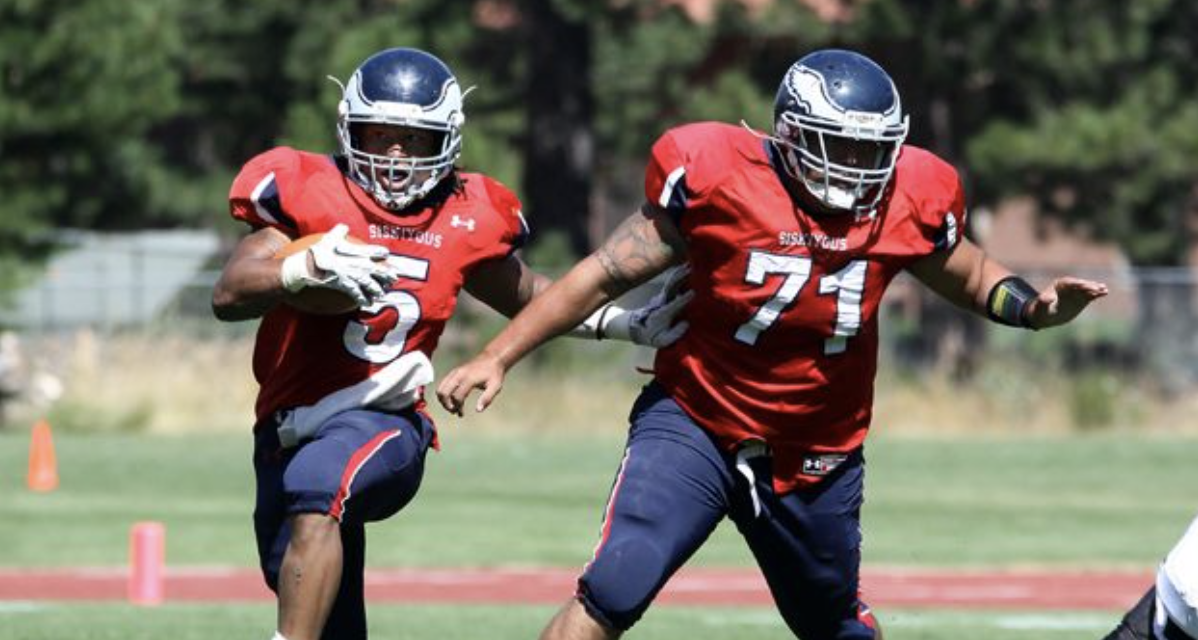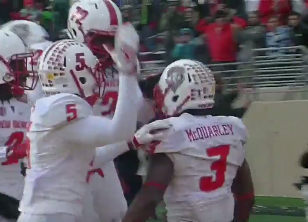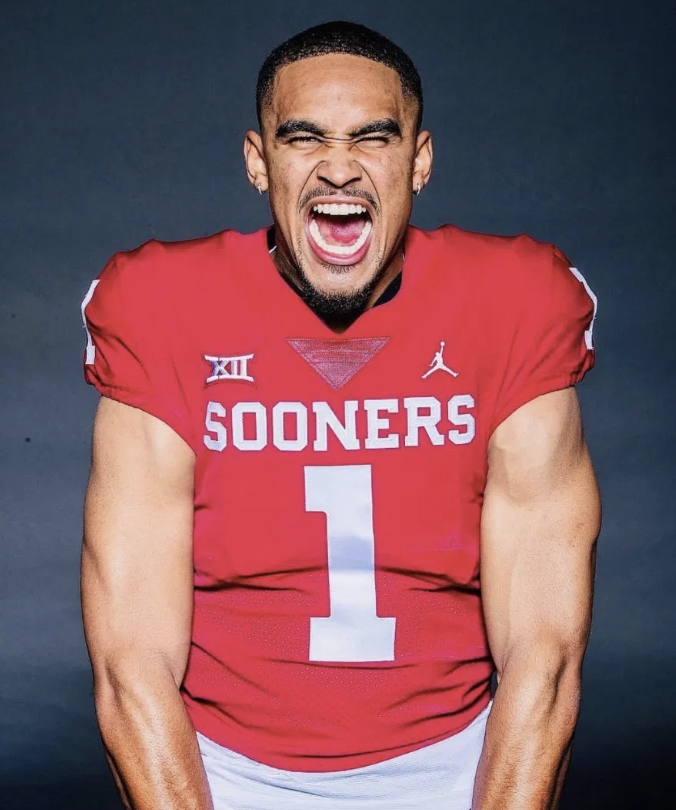The Slow Screen or sometimes called the Slip Screen is a deadly play call that takes advantage of over-aggressive defensive linemen.
When teaching my offensive linemen a new play, I find it extremely valuable to start with the finish. Where do I want my players to end on that play with their hips, their feet, their hands, etc.?
Next, I move to teach players the intent behind the play. Why would we call this play? What makes it successful for our team? Where is the ball going and the aiming point for the ball carrier? What is my job?
Explaining the WHY behind plays, technique, skills, schemes can make all the difference in players believing in a play to make it even more successful.
For this tailback slip screen the aiming point for the tailback is the outside foot of the playside offensive tackle.
We are disguising and making it look like a deep five-step drop pass.
This is important for players to understand….we want defensive players to climb through the pocket vertically.
I want players to know the answers to these questions prior to teaching offensive linemen what their job is.
GETTING THE COUNT
The whole line will utilize our normal communication for our base pass slides.
The line will give our normal communication of who is fanning and who is man on man, with some counting additions.
The screen is what adds the extra “counting” into the play. We determine the count by only counting second-level defenders. If a second or third-level defender walks up on the line, we do not count them and this should excite us!
This is advantageous for us and will more than likely allow the play to be even more successful!
If the playside offensive tackle is lined up to the boundary, he will have the #2 defender (See Figure 1 Color Coded).
This will be verbalized down the line to the playside guard who will have the #3 defender.
The center would then check #3 late and get #4.
If there is no #4 second level defender then the center would pick up the most dangerous man.
Each of the linemen would verbalize the jersey number of that defender to the rest of the unit.
This communication is paramount so each playside linemen knows which defender they are accountable for.
If we are running the slow tailback screen to the field, the playside offensive tackle will have #3 second level defender instead (see Figure 2).
This would then in turn lead to the playside guard having the #4 second level defender to the field, and the center checking #4 before attacking the #5 second level defender.
The backside guard and tackle will always be fanning in their normal pass blocking responsibilities and responsible for their outside gap. They will not release for any second level defenders on this screen. It is crucial that the entire line stops/slows the initial pass rush.
If the Sam runs with the Y, the playside offensive tackle will turn up field with eyes inside and pick up the most dangerous man.
In this defensive look, the playside tackle will be looking to keep the Sam on the outside.
The playside guard needs to take a flat course after stopping the initial pass rush to ensure he can own the correct angle of where the Mike will be.
He must take into account where the Mike will be when he is pursuing the tailback. The guard will most likely be able to pin the Mike inside.
The center is responsible for checking and taking a course as if he will help with Mike.
Once he sees that the playside guard has a course to reach the Mike he will then turn his attention in this example to the Will.
The reasoning behind checking on the Mike is because he is the most dangerous defender to prevent the success of this screen.
TECHNIQUE FOR THE SLIP SCREEN
The offensive line unit must keep the desired intent of this play in the forefront of their mind.
A huge goal for this play is to influence the defensive linemen and other defenders on the line of scrimmage to run upfield.
Our initial pass set must be done so with greater vertical depth than our traditional pass set to help suck the defenders back.
Players are taught to snatch their hand off of the ground and snap their heads back showing a higher hat than what is normally acceptable.
This hopefully will leave zero doubt to defenders on whether or not they should rush full steam ahead.
TIMING OF THE SLIP SCREEN
The timing is critical to this play. The playside guard and tackle will have similar technique.
These players will give a full “one-one thousand, two-one thousand, punch, get out,” cadence.
When performing the initial teaching, I have the offensive linemen say this out loud.
Often players will rush the count and timing, resulting in the initial rush not being slowed down enough for success.
Additionally, this does not allow for enough separation between the offensive linemen, defensive lineman, and the tailback.
I want the releasing offensive linemen to give one more final stunning punch to stall defenders as the linemen make their way in releasing to the second level defender.
The direction of the punch will depend on the defensive front and how the defensive linemen themselves fit into their pass rush lanes.
The center utilizes a similar technique to the playside tackle and guard, however his count is different.
I would rather the center never make it out to the release than skip out early in stopping the pass rush.
His timing is a full “one-one thousand, two-one thousand, three-one thousand, punch, get out.”
Once he releases he will check/ put eyes on the playside guard’s second level defender to ensure he is being taken care of before working to his assignment.
The number one job of the offensive linemen in this play is to stop/slow down the initial rush. The second job is to give a good heavy punch to the side and release to their second level defender.
RELEASING TO THE SECOND LEVEL
When releasing to the second level defender I challenge playside linemen to get width.
I want them to allow themselves to take an initial course of around fifteen degrees before accelerating north-south to their aiming point of the second level defender.
Players have to determine their own path pre-snap.
After communicating the second level defender who they will be releasing to down to the rest of the line, they must visualize the correct course to take that allows them to get their job done.
A good release is not where the defender is, but where he is going to be.
In general, the release course will not need as much width when running this screen to the boundary as what is needed when running this screen to the field.
This can be shown generally through Figure 1 and Figure 2.
I have also removed the “head” from my vocabulary when teaching aiming points or body position.
My actionable language revolves all around our hips and belly buttons.
Players understanding where their hips and belly button should be on each defender on every play allows us to own our angle in each and every play.
On this slip screen release I teach them to not break down when reaching the defender, but to instead roll on full speed ahead.
Like a fat guy with his shirt off running down a sidewalk (the players love this analogy).
You’re either getting hit or getting the heck out of the way. Both of the scenarios if done correctly create the desired lane for our tailback to hit his landmarks and reach the promised land.
The tailbacks timing will allow him to be right behind our releasing offensive linemen by the time they reach the second level.
The two reasons why I do not have my offensive linemen break down before reaching a second level defender are:
1) A lot of time has already passed by the time they reach the second level defender; and
2) I do not want my linemen to take the chance of breaking down only to get juked out or clog a lane for the tailback to burst through. I do not need them to sustain this block for an extended amount of time.
CONCLUSION
In conclusion the most important factors regarding the tailback slip screen with concerns to the offensive line include:
- Communicating the count and who has who in the second level.
- Using proper technique with the intent of selling defenders upfield.
- Stopping/ Slowing down the initial rush from the defensive line.
- Utilizing proper release technique and timing to ensure we can own the appropriate angle with the second level defender.
As always there are lots of nuances and details that can be coached on every play.
You can coach players on every step, angle, and piece of every play with incredible detail.
I have always been under the belief that I wanted to allow my players to be athletes and allow them to put themselves in the best position to be successful.
Every player has their own unique combination of size, strength, and skills.
The steps and angles that work for one player will not always work for the shapes and sizes of linemen we coach year after year.
I tend to give more details and framework for player’s techniques when they are unable to put themselves in a position to accomplish their goal on the play.
As stated earlier, I start with where I want them to finish the play and we then work on how do we get there from then on.
Caleb Keeton – Offensive Line Coach – Kings High School, Ohio




